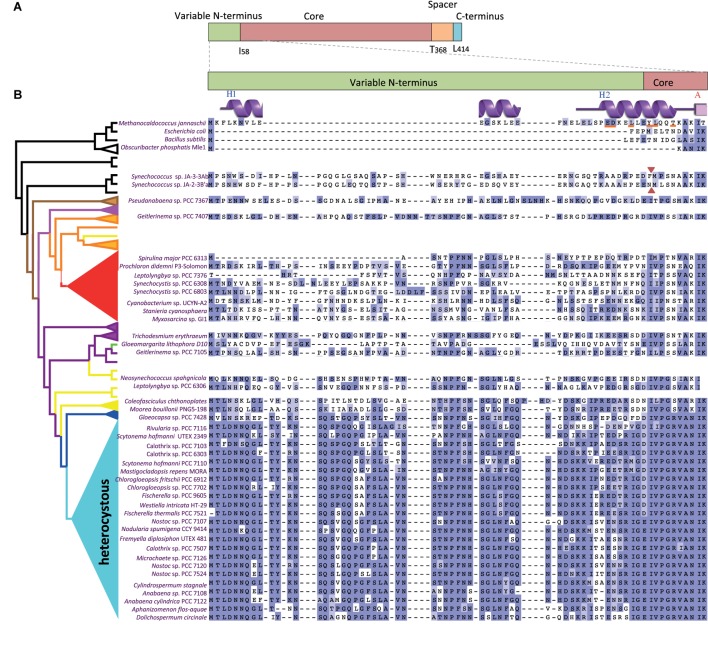FIGURE 1.
Sequence comparisons of the FtsZ variable N-terminal peptide in a representative set of cyanobacteria. (A) FtsZ regions (above) and amino acid boundaries (below) in Anabaena sp. PCC 7120. (B) Multiple alignment of the N-termini of FtsZ (enlarged region) from a subset of model organisms (top), melainabacteria (Obscuribacter) and cyanobacteria. The represented heterocystous cyanobacterial strains were chosen by their higher disparity, whereas a Pseudanabaena sp. was included by its high genetic distance to the clade of heterocystous strains. A simplified FtsZ tree (left) identifies the clade to which they belong. Red arrowheads indicate the first amino acids of the FtsZ sequence of two Synechococcus sp. JA strains before re-annotation. Gaps are indicated by dashes. A residue is colored dark blue if it matches the consensus sequence at that position. If it does not match the consensus residue but the 2 residues have a positive Blosum62 score, it is colored light blue (see Supplementary Figure S1). Features of the secondary structure of Methanocaldococcus FtsZ, PDBsum entry 1W59, (Oliva et al., 2004) are shown over its sequence and the residues involved in FtsZ dimerization are underlined in red.

